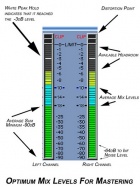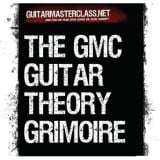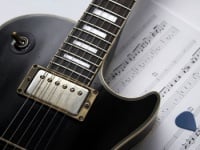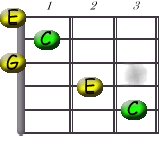Portal:Theory
Guitarists Bands Lesson Plans Techniques Gear Theory Genres GMC Journal GMC Instructors Student Instructors All portals
The Theory Portal |
|---|

This is where the theoretical rubber meets the road! If you want to know about Scales, Modes, Chord Construction or Musical Notation look no further! |
Important Articles |
|---|
|
Music Theory Series
Home Recording Tips And Tricks
An interesting entry by Instructor Todd Simpson on home recording, providing some basic theory and tips for those wishing to make great recordigs at home. "This article will talk about various techniques and tips for getting the best possible sound out of your home recording gear"
As you guys know, GMC Instructor Andrew Cockburn has written some excellent theory lessons which can be found and discussed in our Theory Board. Member Loundzilla just put together all these lessons in a cool book file, so that we can take it with us anywhere or print it. Over 200 pages await featuring theory basics, notation, scales, modes, chords, harmonies... and much more! Grab your free copy now!
Want to learn theory but never known where to start? Check out Andrew's Theory Lessons! "Over time I am hoping that this will become a complete theory course that will enable players of all levels to learn all they need to know about theory to support their guitar playing..."more!
Want to learn some interesting theory terminology? Check out the Theory Glossary! "A list of musical theory terminology - the essential reference for theory students..."more!
Want to improve your knowledge of chords? Check out the Chord Library! Here is a library of chords diagrams. Green dots are root notes of the chord. If you would like to add any chords to the library yourself then check out this tutorial. |
Featured Lesson |
|---|
| Extending Scales Using Relatives
An interesting lesson by member Mike Dix: Want to learn the theory behind harmonics? Check out Andrew's lesson. Natural harmonics, pinch harmonics, artificial harmonics, tapped harmonics - what are they? What is a harmonic anyway? Lets see ..." (more)
Cadences can be seen as 'musical punctuation'. A cadence is a formula that signifies the end of a musical phrase, like punctuation in written language. For our purposes a cadence may be regarded as a harmonic formula, usually consisting of a pair of chords, that also often has the important function of defining the key of the music. Cadences give phrases a distinct finish, which can, for example, show the listener whether the piece is to be continued or concluded..." (more)
The Harmonic minor scale is a variation of the minor scale in which the 7th degree is sharpened compared to the natural minor (which make is a major 7th instead of a flattened 7th). The resulting scale sounds a little odd and exotic, since the introduction of the major 7th leaves a 3 semitone gap which is a little unusual in western music. In contemporary music, this scale is beloved of neoclassical guitarists and is an important weapon in any one's arsenal. It is a very defined sound and can be overused, but used sparingly it can lend a very exotic feel to an otherwise normal piece..." (more)
In this lesson, we are taking our understanding of chords to the next level! We have looked at triads, sevenths and even extended chords, but there is more! Once again, we can modify the combinations of notes in our chords in some ways that are different again to get more cools sounds! Until now we have been following a simple principle of stacking notes on top of each other. That lead first to triads, then 7th chords, and finally into the world of extended chords such as 9ths, 11ths and 13ths. In this lesson, we are going to reign back the stacking a little and look at other ways of combining chords principally by adding and substituting notes rather than just plain stacking..." (more)
"So you know all the boxes in a C major scale because that's what was in your theory book, but you need to write a solo in A. What do you do? How do you apply all of your scale knowledge to writing in a particular key? How do you take something written by someone else and change its key? In this lesson we will look at how to do all of the above. For the record, transposing means changing the key of a sequence of notes without affecting their harmonic relationship - we will look into that as it is closely related to scale selection and moving boxes around the neck to get the scale you want...(more)"
"The Melodic minor scale was an attempt to "fix" the problem caused by the large 3 step interval in the harmonic minor without sacrificing the leading tone (for more details on this see my lesson on Minor Scales Revisited). The resulting scale is a harmonic minor with a sharpened 6th (meaning it reverts back to a major 6th). This means we end up with what is basically a major scale but with a flattened 3rd. Since the 3rd is the truly important indicator of major vs minor, this works out reasonably well in practice, and is better suited to melody than the harmonic minor, at least in classical terms..." (more)
"In this multi part lesson we are going to build on our knowledge of the major scale, and start looking at a couple of key concepts around chord and harmony construction. When we are done, you'll be able to understand complex relationships between notes, harmonize a lead line, construct a B augmented chord, and leap tall buildings in a single bound ..." (more)
"Today we are going to look at how we can put the knowledge we have so far to good use and learn a little about harmonization. This is a fascinating subject, and we are going to look at the basics in this lesson, and then some more complex ideas in a later lesson. A lot of you probably know what harmonization is when you hear it but how to explain what it actually is? Well, in simple terms it is enhancing a melody line by playing notes at the same time either higher or lower than the melody note itself. OK, that is a simple explanation and not exact by any means, but it gets us started. The next question is which notes? Will any notes do? For harmonization, no, we have some specific ways of picking out the notes we use - they all have a very definite relationship to the melody we are harmonizing..." (more)
"Modal Pentatonics are a very different way of recycling and re-using your old pentatonic patterns in a new context to get a fresh sound without learning a lot of new scales. Although the theory behind them is a little complex if you aren't familiar with the major modes, by the end of the lesson we will have a list of rules for the use of Modal Pentatonics, so that you can work out which scales work in which context..." (more)
"Hi all, if you have been following along so far, you now know about the degrees of the scale and intervals. We're now going to start putting this to work for us in part 3 of the series - triads. First of all, what is a triad? Well, its the simplest type of chord, one consisting of 3 distinct notes. Another way to look at it is as 2 intervals stacked on top of each other, sharing the middle note of the three. Basic chords such as C, F, G, E etc all qualify as triads, because although you may be able to play them on all 6 strings in some cases, there are only 3 distinct notes, some of which may be repeated. As the simplest of chords, triads are probably among the first chords you learnt as a beginner. In fact, triads are very versatile, and you can go a long way with them..."(more)
|
Things you can do! |
|---|
system check - erase |











